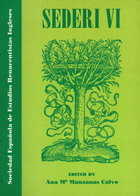
Sederi 6
Edited by Ana María Manzanas Calvo & S. G. Fernández-Corugedo
Sederi — Universidad de Castilla – La Mancha
1996
ISSN 1135-7789

Sederi 6
Edited by Ana María Manzanas Calvo & S. G. Fernández-Corugedo
Sederi — Universidad de Castilla – La Mancha
1996
ISSN 1135-7789
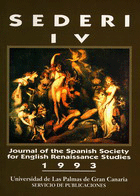
Sederi 4
Edited by Teresa Guerra Bosch
Sederi — Universidad de Las Palmas de Gran Canaria
1993
ISBN 84-88412-02-9
Contents
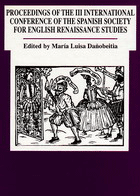
Sederi 3
Edited by María Luisa Dañobeitia
Sederi — Granada
1992
ISBN 84-7933-105-4
Contents
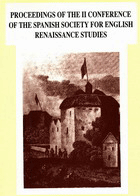
Sederi 2
Edited by S. G. Fernández-Corugedo
Sederi — Universidad de Oviedo
1992
ISBN 84-7468-512-5
Contents
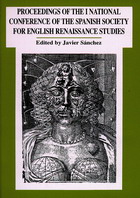
Sederi 1
Edited by Javier Sánchez Escribano
Sederi — Universidad de Zaragoza
1990
ISBN 84-7733-218-5
Contents
CALL FOR PAPERS – SEDERI YEARBOOK SEDERI, the Yearbook of the Spanish and Portuguese Society for English Renaissance Studies, is an annual publication devoted to current criticism and scholarship on Early Modern English Studies. It is peer-reviewed by external readers, following a double-blind policy. It is published in paper and online, in open access. […]
Editorial Board
Francisco José Borge López (U. Oviedo)
Clara Calvo López (U. Murcia)
Berta Cano Echevarría (U. Valladolid)
Jorge Figueroa Dorrego (U. Vigo)
Keit Gregor (U. Murcia)
Mark Hutchings (U. Reading, UK)
Tamara Pérez Fernández (U. Valladolid)
Juan A. Prieto Pablos (U. Sevilla)
Ana Sáez-Hidalgo (U. Valladolid)
Scientific Committee
Maurizio Calbi (U. Salerno, Italy)
Rui Carvalho Homem (U. Porto, Portugal)
Pilar Cuder Domínguez (U. Murcia)
Michael Dobson (Shakespeare Institute, UK)
John Drakakis (U. Stirling, UK)
Teresa Fanego (U. Santiago de Compostela)
Manuel Gómez Lara (U. Sevilla)
Dolores González Álvarez (U. Vigo)
Santiago González Corugedo (U. Oviedo)
Derek Hughes (U. Aberdeen, UK)
Douglas Lanier (U. New Hampshire, USA)
Jesús López Peláez Casellas (U. Jaén)
Zenón Luis Martínez (U. Huelva)
Salomé Machado (U. Lisboa, Portugal)
Andrew Monnickendam (U. Aut. Barcelona)
Javier Pérez Guerra (U. Vigo)
Ángel-Luis Pujante (U. Murcia)
Tiffany Stern (U. Oxford, UK)
Keith Whitlock (Open U., UK)
Laura Wright (U. Cambridge, UK)
Download this Style sheet in portable document format
Before sending your manuscript, please make sure that your piece complies with all these requirements:
Note that non-standard ASCII characters or unusual fonts, particularly special characters in Old and Middle English, Phonetics or Greek, illustrations, graphics, tables, pictures, etc. must be consulted with the editors.
SEDERI follows the Chicago Manual of Style (CMS)in its latest version (Chicago Style 17th ed). For a quick citation guide, see https://www.chicagomanualofstyle.org/tools_citationguide/citation-guide-2.html
1. References within the text and in footnotes
Footnotes are intended for providing further detail/commentary or for explanatory purposes.
2. List of bibliographical references
A list of works cited should be provided at the end of the essay under the heading “References,” following the Chicago Manual of Style (CMS16).
Here you can find some examples of bibliographical citation for the reference list:
BOOKS
EDITED/TRANSLATED BOOKS
JOURNAL ARTICLES
BOOK CHAPTERS
MANUSCRIPTS
FILMS
PERFORMANCE REVIEWS
LIVE PERFORMANCES
For more examples, see our latest issues in
https://recyt.fecyt.es/index.php/SEDY
http://www.sederi.org/yearbook